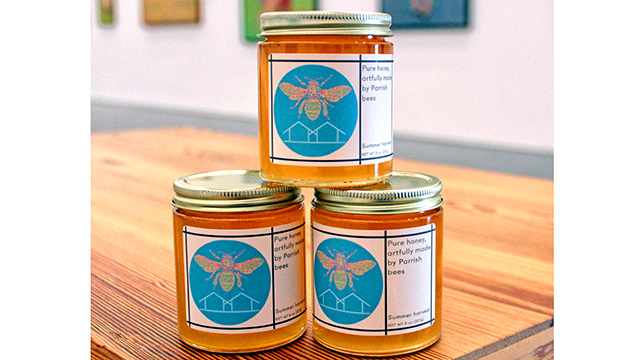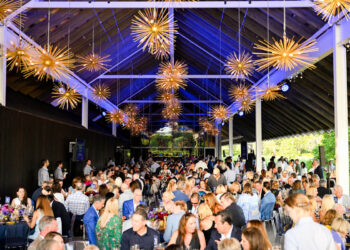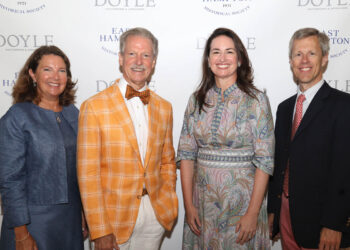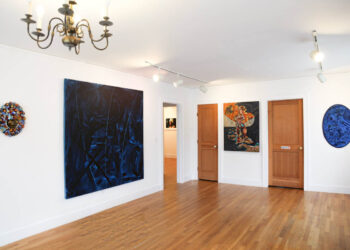Parrish Art Museum Interim Director Chris Siefert is delighted about the success of the pilot program that had a local bee enthusiast and local landscape architect, Tony Piazza, transplant four active bee hives from his property to the Parrish. Siefert came to the Water Mill-based museum four and a half years ago and loves to talk about “the buzz” that the bee hives and the jars of honey harvested by the hives are making all over the East End – in local publications, on the local FM radio and local websites, and in the homes of Museum-goers, of course. “Last year, we only sold the honey harvested on the Museum grounds through the gift shop and it sold out,” he said. Those 160 jars were in high demand. “This year, we’re launching an end-of-year annual appeal and offering it as something special for membership, besides still selling it in the gift shop.” Parrish Honey jars offer eight ounces of delicious honey.
Siefert noted that the project was managed by Tony Piazza, of Piazza Horticultural, “who handles all the day to day operations.” In talking with Piazza, the story of how the bees came to the Parrish and why they are flourishing was explained.
 |
|
Tony Piazza and Chris Siefert. (Photo: Tom Kochie) |
Piazza is in fact “the beekeeper.” When ask how he became a beekeeper, Piazza said, “I became a beekeeper by studying under a master beekeeper, out here on the East End. Part of our design work, meaning all of our landscapes, are organically maintained, and we encourage our clients to also keep bees because the bees need all the help they can get. One day I said, I should practice what I am preaching and started keeping bees on my own about six years ago.”
Then he explained what led to this unique collaboration. Piazza relayed, “When I moved to the village, there just wasn’t enough room, so I had to find a home for them. I was talking to the former director and she said something like why don’t we have bees at the Parrish?”
He elaborated, “The first year the bees were really happy there. There was a honey harvest the first year. You don’t always get a harvest the first year. This past season was the second season and the bees were equally as happy. We harvested 260 pounds of honey!”
When asked about where he placed the bee hives, Piazza said, “It’s four individual hives that are on the same spot of the property and the reason they are thriving at this location is because of the meadow at the Parrish and the orchard across the street – and also the trees that are planted in the landscape at the Parrish. All the native trees are really good food for the bees.”
 |
|
Parrish Honey. (Photo: Tom Kochie) |
Digging deeper into bees, Piazza explained why many on the East End are taking to harvesting bee honey on their own properties. “There is this syndrome called Colony Collapse Disorder and that’s why more and more people are getting into beekeeping – because the wild bees are just dying for really unknown reasons. We think it’s related to pesticides.”
When ask about the honey produced by the hives, Piazza revealed, “It’s considered a wildflower honey because it’s from all sorts of different plants. There is a big stand of Tupelo trees around the Museum. Those trees definitely have a flavor profile in the honey.” He added, “It’s definitely high quality.”
Chris Siefert is certainly excited about future harvests – and Parrish members should be a buzz about the 2020 batch of Parrish Honey. “The honey jars are being utilized in a sort of a end-of-the-year membership appeal. People can buy new memberships, they can gift new memberships, or renew their membership at a higher level,” he noted. “To all these people, we are offering a jar of honey.”












